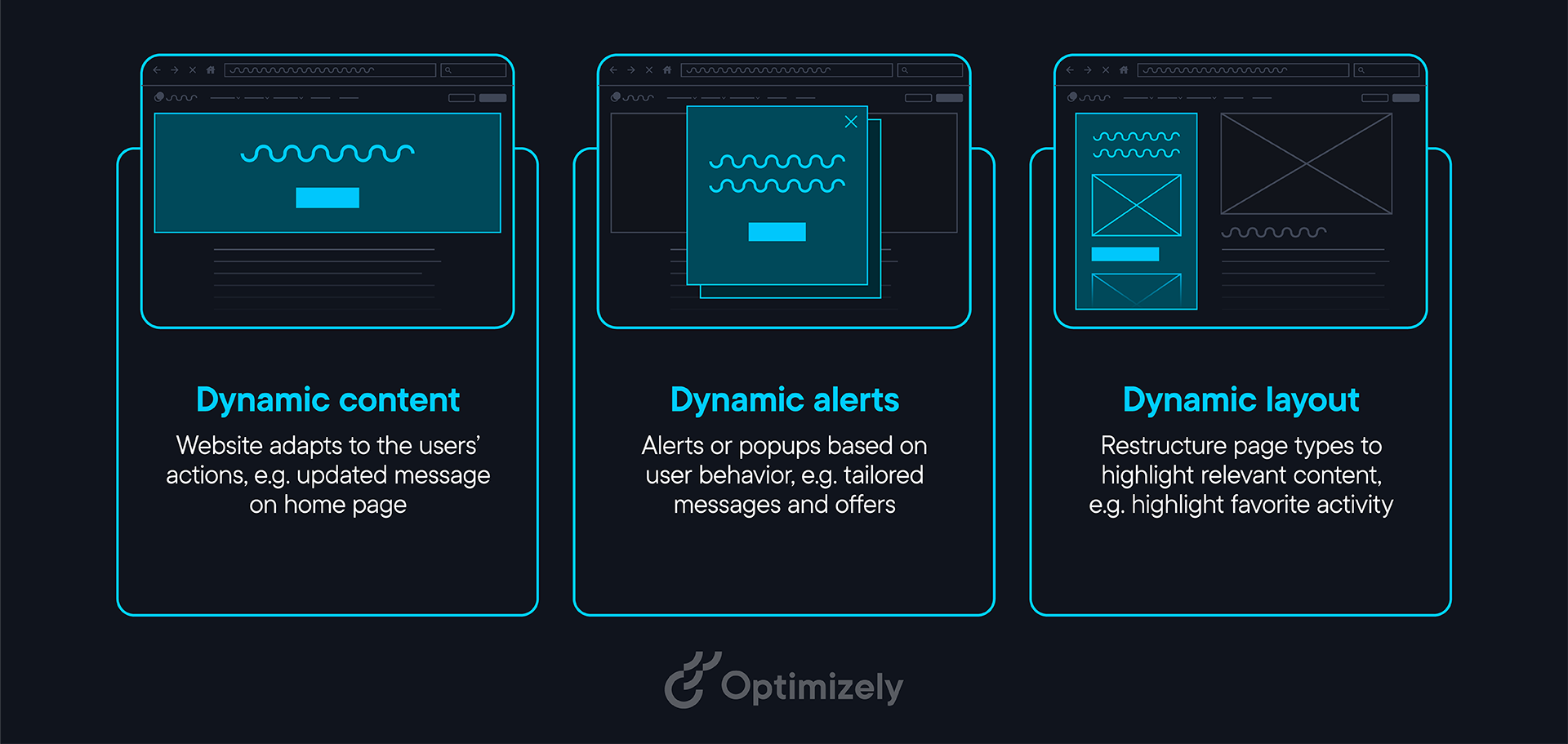
When only 26% of executives noted that they don't have a unified definition of personalization across their organization, we took notice. In fact, we took it... personally.

Fun fact: the GOAT never actually said the phrase "...and I took that personally." Just another example of a Mandela effect happening as we speak.
Another fun fact: 62% of executives have increased their personalization budget compared to the previous year, which means personalization is clearly on everybody's mind.
So... yea, personalization isn't one of those buzzwords making its way into the pantheon of overused corporate jargon. It's a concept that many companies don't understand because they don't understand the basic mechanics of a personalization structure.
There are multiple ways to approach personalization from a structural standpoint. The two main types of personalization include rule-based personalization and AI personalization. You can choose to use one or a combination of these personalization approaches to create a dynamic, tailored experience for your users. Effectively communicating these different personalization techniques will help you develop a plan that works well.
And since 40% of executives are having difficulty scaling (corporate jargon alert!) their personalization programs effectively, it's probably best to unpack these two main types of personalization to see which one (or how you can combine them) can work best for you.
Rule-based personalization
Rule-based personalization works by customizing user experiences with predefined rules to display specific content or features based on user demographics, actions, and behaviors.
You can almost think of this type of personalization as a flow chart, relying on “if/then” logic (e.g. if a user performs action x, show them content y). Each of the touch points that are defined by predetermined rules are like the atoms mentioned above. These atoms might include the user's location, their age, or other affinities. Once these data points or atoms are plotted, the sequencing that occurs thereafter is what forms the molecules.
In order to maximize rule-based personalization, start by defining clear rules based on user data (location, age, behavior, etc.) and tailoring your site to create a dynamic, segmented experience.
Some examples of rule-based personalization are:
- Dynamic content – Websites adapt to user actions to surface relevant messaging and content. This could take the form of content recommendations or adapting customized messaging to returning users.
- Dynamic alerts – Popups and banners show up on user behaviors with tailored messaging. A classic example of a dynamic alert is when a user goes to close a browser window and popup shows up encouraging the user to stay on site.
- Dynamic layout – Pages are restructured to surface relevant content based on behaviors taken by the user during navigation. Google does this with SERPs if you are searching from a logged in account.
Advantages of rule-based personalization
- Completely customizable - The number and types of experiences you can create are endless. If you're collecting valuable data and using a powerful CDP to manage it, you can create limitless permutations to customize the customer journey however you want.
- Unlimited control - When you make the rules, you maintain control. You can be as granular as you want and tweak as needed, providing as much governance (corporate jargon alert!) as possible.
- Simple implementation - If you've ever constructed a flow chart (let's say, for outbound sequencing or setting up a chatbot), then you can implement rule-based personalization.
Disadvantages of rule-based personalization
- Complexity - Sometimes customization is a double-edge sword. With limitless power comes limitless absolute responsibility. When you have many different sequences running concurrently, that allows for more opportunities for bugs and discrepancies to emerge.
- Intensive - If you want to scale rule-based personalization, you'll need to do a lot of planning and adjusting to ensure the dynamic experiences you're providing are aligned with your broader personalization strategy.
![]()
Algorithmic (AI) personalization
Another way to personalize is through machine learning or algorithmic personalization. This type of personalization leverages AI and machine learning (ML) to fuel content and product recommendation engines.
This is especially relevant in cases of websites with large quantities of content or products, where rule-based personalization will become extremely resource intensive.
Instead of defining rules where you tell your personalization engine how to arrange atoms into molecules, AI/ML personalization assembles them based on real-time data and user behaviors. AI or machine learning personalization relies heavily on analyzing the behaviors of similar customers on the website in order to predict what would be of interest to a particular customer's browsing experience, thereby serving 1:1 tailored content.
An easy way to think about this is to think of ecommerce sites that surface "customers also bought" features that show you product recommendations. Customers that may be placed in the same audience can be served completely unique content/products recommendations, focused on what they are looking for today.
Based on these insights, the algorithm can recommend products or surface relevant content that’s highly likely to capture the user’s interest.
Some examples are:
- Content recommendations - Personalized articles, videos, or other content that aligns with a user's interests
- Product recommendations - Product suggestions based on past purchases, browsing history, or similar user interests
- Email recommendations - Tailored emails with content, products, or offers that match recipients interests
Advantages of AI personalization
- Scalability - As with most other AI solutions, scalability becomes much more attainable. Instead of you doing all the legwork, you can let the robot overlords AI platform do it's thing.
- Enhanced user experience - Adaptability and real-time personalization are also much more attainable with an AI engine steering the ship.
- Content reuse - How often have you done content audits only to realize that the article you just wrote was already written 2 years ago (and written way better)? AI is an effective way to surface the most relevant content in your content library, even the articles you may have forgotten about.
Disadvantages of AI personalization
- Limited scope - AI still has a ways to go when it comes to personalization outside the scope of recommended content and products.
- Data concerns - Are you one of the users that likes having your data harvested in ways you can't even understand? Probably not. And if you said yes, you're probably lying. Privacy and data tracking transparency can become murky if not done properly.
- Content availability - Content recommendations are useless if you don't have content to recommend (duh). Many marketing teams are struggling when it comes to scaling content, but now those pains are traversing into the realm of personalization.
Wrapping up
When you break it down, implementing personalization really comes down to whether you want to institute the customer experience mapping yourself (rule-based), have AI do it for you (AI personalization), or employ some kind of hybrid.
Most businesses would probably prefer a hybrid, where you can define rules based on specific customer actions (atoms), customer segments (molecules), and customer profiles (organisms), while allowing AI to deliver a personalized experience in real-time, reacting to customer behavior.
However you choose to personalize, just remember to take it personally.

